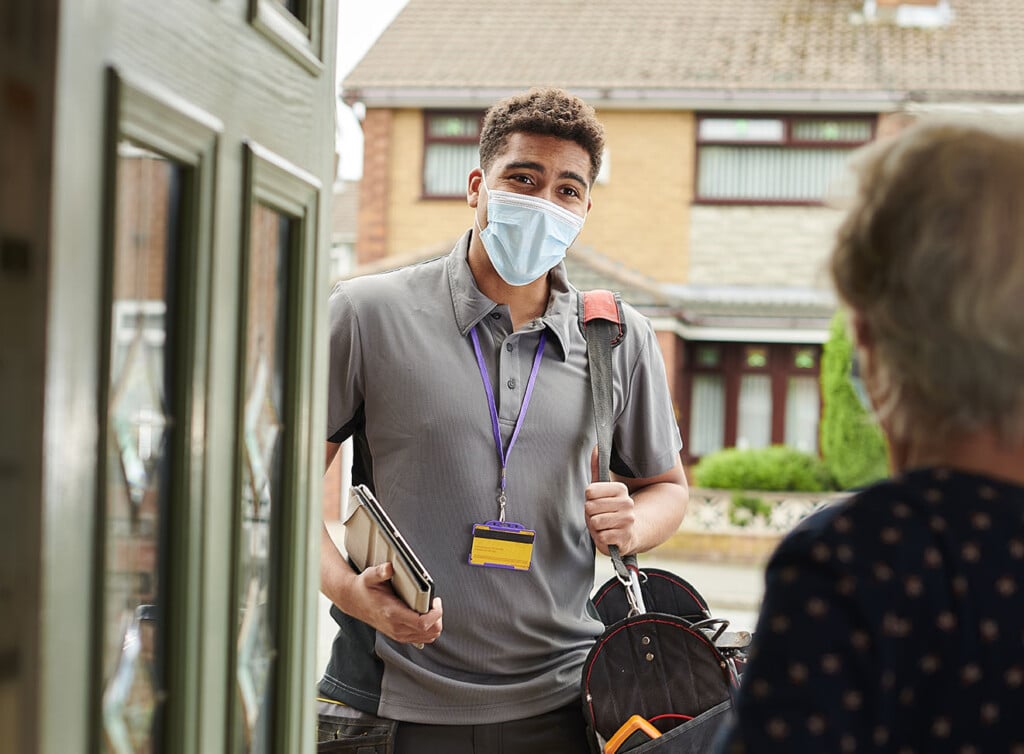Awaab’s Law: What It Means For Social Landlords & Tenants
Six months ago, the nation witnessed a pivotal moment in housing legislation when the government enshrined into law the memory of a little boy whose tragic death shed light on the dire consequences of neglected housing conditions. On 21 December 2020, two-year-old Awaab Ishak passed away from a respiratory condition caused by prolonged exposure to mould in a Rochdale Boroughwide Housing (RBH) flat.
Despite repeated pleas for assistance from his family, the landlord failed to address the disrepair, ultimately leading to the devastating outcome of a child’s death. In response, the Manchester Evening News, in collaboration with Shelter, spearheaded a campaign advocating for ‘Awaab’s Law’, which now imposes legal obligations on social landlords to respond promptly to damp and mould issues. The enactment of this law marks a significant step towards ensuring safer and healthier living environments for social housing tenants across the UK.

Awaab’s Law Overview
Awaab’s Law has been implemented with the primary objective of directly confronting the pervasive problems of dampness and mould in social housing. Key components of this legislation include:
Mandatory Action for Landlords: Social housing landlords are now legally obligated to promptly investigate and rectify damp and mould concerns upon notification.
Strengthened Powers of the Housing Ombudsman: The law enhances the authority of the Housing Ombudsman, empowering them to more effectively oversee landlords’ compliance with regulations pertaining to housing conditions.
Inclusion in Tenancy Agreements: These regulations are embedded within tenancy contracts, empowering tenants to legally demand decent living conditions from their landlords.
What Does Awaab’s Law Propose?
In England, social landlords are already required by law to respond to hazards and maintain homes ‘fit for human habitation.’ However, Awaab’s Law aims to introduce specific timeframes for addressing reported hazards, aiming to prevent prolonged periods of neglect. The proposed timeframes include:
- 14 days to commence an investigation after receiving a report of a hazard.
- Seven days to take action to rectify a hazard.
- 24 hours to address emergency hazards that pose an immediate risk to health or safety.
Furthermore, landlords must consider the individual health conditions of tenants when evaluating the severity of hazards like damp and mould. Evidence from third parties, such as healthcare providers, must also be taken into account during hazard assessments.
Following an inspection, landlords are required to provide tenants with a comprehensive written report within two days, detailing the investigation, identified hazards, proposed solutions, and estimated completion times.

What Are Social Landlords’ Responsibilities Under Awaab’s Law?
Prompt Investigation and Remediation: Landlords must swiftly address reported damp and mould issues, identifying the root cause and implementing solutions to ensure tenant well-being.
Upholding Decent Living Standards: Homes must be free from serious hazards, with landlords proactively preventing damp and mould through regular checks and maintenance.
Professionalisation Standards: Senior housing staff are required to acquire or work towards recognised housing management qualifications, ensuring a comprehensive understanding of health risks and legal obligations.
What Are Tenants’ Responsibilities Under Awaab’s Law?
Reporting Issues: Tenants must promptly inform landlords about any damp and mould problems, providing detailed information for effective resolution.
Cooperation with Landlords: Tenants should allow access for inspections and repairs, adhering to advice given to prevent or mitigate issues.
Awareness of Rights: Tenants should be aware of their rights to a hazard-free home and the legal avenues available if landlords do not comply within set timeframes.
Awaab’s Law: Overall Implications for The Social Housing Sector
While targeting social housing specifically, Awaab’s Law resonates across the housing sector, reflecting standards for safe and healthy homes outlined in other legislation. This law represents a significant stride towards ensuring healthier living environments in social housing and fostering a culture of safety and well-being for all residents.

Why Leveraging Technology Is Vital for Social Landlords to Comply with Awaab’s Law
In order to effectively address damp and mould issues and comply with Awaab’s Law, social housing providers must harness technology and the power of data. However, doing this often presents significant challenges due to reliance on unstructured data. This unstructured data (i.e data that is not defined or arranged according to set criteria) presents difficulties in obtaining a comprehensive view of affected tenancies. Landlords often need to interpret data from disparate systems, including housing, asset, and risk management, as well as mobile workforce and contractor systems, which are typically not integrated. This lack of integration results in disparate access levels across the organisation, exacerbating the complexity.
Identifying properties affected by damp and mould is a primary concern for social housing providers, followed by accurately assessing the severity of individual cases to prioritise tenant needs effectively. Mobysoft customer success manager for repairs, Zoe La Brow, says of the current situation: “Data pertaining to damp and mould, for many landlords, is recorded in unstructured data sets – the data is not defined or arranged according to set criteria and spans multiple systems across organisations, making it difficult for any user to get a full picture of the issue across the full quota of an organisations’ tenancies.
“To remedy this, organisations must look to technological solutions as the sheer volume of data, most of which is from differing sources, is simply too vast for us as humans to efficiently analyse and identify patterns effectively.”
Nat Tuer, head of product for repairs solutions at Mobysoft adds: “If you’ve got 3,000 properties that are experiencing damp and mould, how do you start to attack that problem?
“In order to manage that, social landlords need a system to do it, which they don’t have, it doesn’t exist. So currently, they’re doing it on spreadsheets and individuals in these organisations are doing their best to try and manage what can be 3,000 properties, having lots of inspections and lots of repair jobs and cases.
“And so we’ve started to learn a lot about this from the different organisations and how they try to manage it now and what would be the best solution. That’s where Mobysoft’s RepairSense Damp & Mould module has come into play.
“It can model hundreds of 1,000s of rows of data, which we just couldn’t do as human beings in a few minutes, and identifies whether there’s a possible problem.”
How RepairSense Can Help in the Fight Against Damp and Mould
By reading repair job descriptions, RepairSense quickly flags recurring problems that would be impossible for housing providers to identify at scale. It establishes connections between repair jobs, gauging customer experience impact, and empowering landlords to proactively avert persistent issues.
The powerful harnessing of leveraging supervised machine learning and data science allows this innovative platform to draw upon a data-set of over 2 million repairs jobs and provide users with insight to make data-driven decisions when it comes to repairs and maintenance.
Think of RepairSense as your AI-powered ally, on hand to tackle damp and mould issues head-on. Offering precise insights, including data aggregation to identify root causes, RepairSense empowers social housing providers to proactively resolve damp and mould issues, safeguarding organisation reputation and prioritising tenant well-being.
Those organisations who have adopted the platform have benefitted from improved productivity, reduced repairs, and heightened customer satisfaction, crucial for social landlords when it comes to complying with the requirements set out by Awaab’s Law. For further information (including customer testimonials) about how RepairSense can assist your organisation in complying with Awaab’s Law, visit our dedicated RepairSense Microsite.
- Five Pillars of a Successful Data Strategy - July 16, 2024
- Five Things Labour Can Do to Solve the Social Housing Crisis - July 9, 2024
- This Month In Social Housing: April 2024 - May 1, 2024